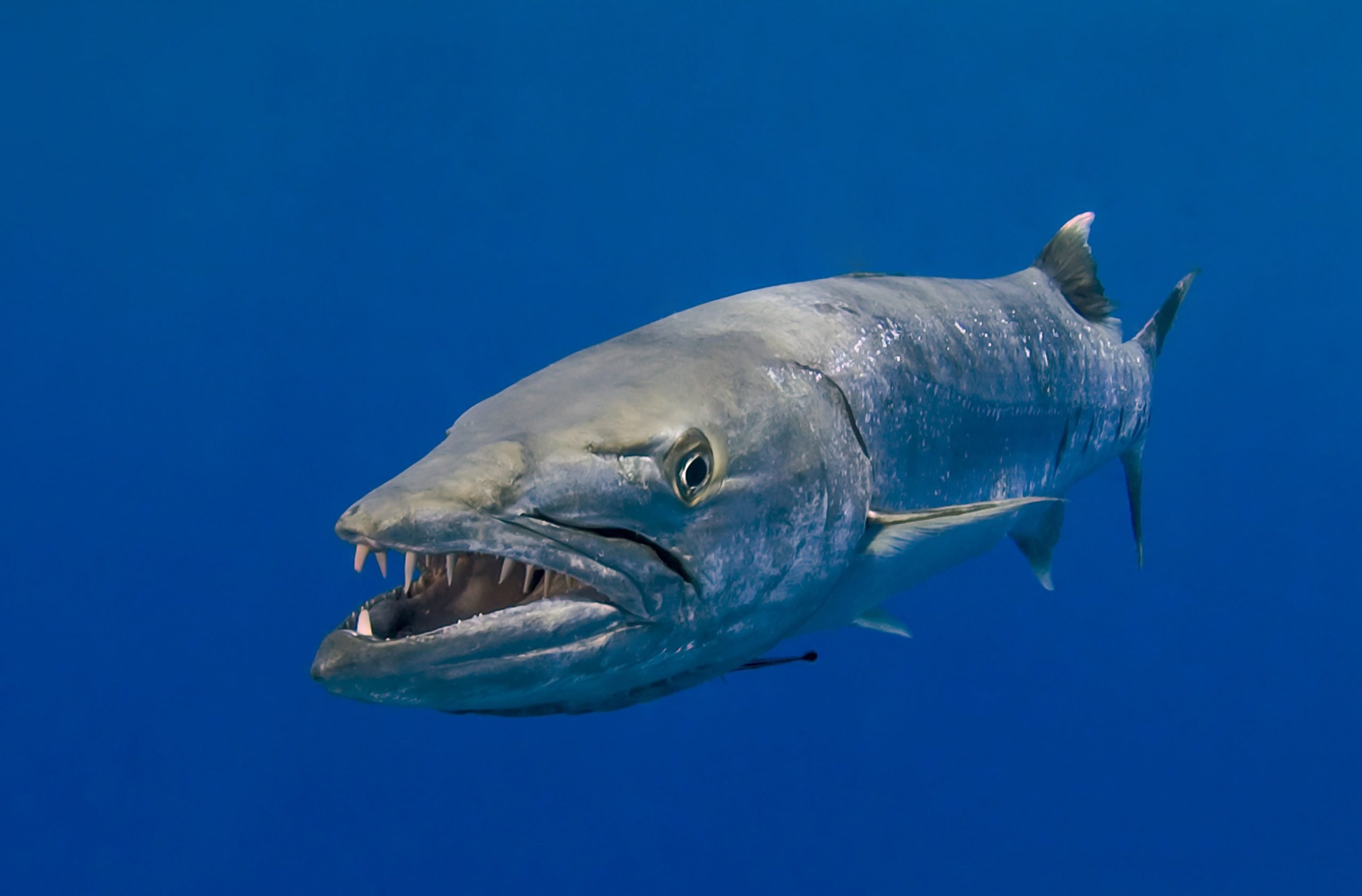
Barracuda
Barracuda.
More than 20 species of barracuda inhabit tropical and subtropical waters from Brazil to Florida and the Indo-Pacific oceans from the Red Sea to the Hawaiian Islands. The barracuda is an elongated fish with prominent jaws and teeth, silver in color, and with a large head and V-shaped tail. It may grow up to 10 feet long and is a fast swimmer, capable of striking rapidly and fiercely. It will follow swimmers but seldom attacks an underwater swimmer. It is known to attack surface swimmers and limbs dangling in the water, particularly if they are adorned with shiny metallic objects, such as jewelry. Barracuda wounds can be distinguished from those of a shark by the bite pattern. A barracuda leaves straight or V-shaped wounds while those of a shark conform to the shape of the shark jaws. Life threatening attacks by barracuda are very rare.
Prevention.
Barracuda are attracted by shiny objects, such as metallic fishing lures. Avoid wearing shiny equipment or jewelry in the water when barracudas are likely to be present. Avoid carrying speared fish, as barracuda may strike them. Avoid splashing or dangling limbs in barracuda-infested waters.
First Aid and Treatment.
- Bites may result in significant bleeding and tissue loss. Take immediate action to control bleeding using large pressure bandages. Cover wounds with layers of compressive bandages preferably made with gauze, but easily made from shirts or towels, and held in place by wrapping the wound tightly with gauze, torn clothing, towels, or sheets. Direct pressure with elevation or sufficient compression on “pressure points” over major arteries will hopefully control all but the most serious bleeding. These pressure points are the radial artery pulse point for the hand; above the elbow under the biceps muscle for the forearm (brachial artery); and the groin area with deep finger-tip or heel-of-the-hand pressure for bleeding from the leg (femoral artery). When bleeding cannot be immediately controlled by direct pressure and elevation or by compressing pressure points, a tourniquet should be used to save the victim’s life even though there is the possibility of loss of the limb if the application exceeds a duration of 2-4 hours. Do not remove the tourniquet. It should be removed only by a physician in a hospital setting. Loosening a tourniquet prematurely may cause further shock by allowing recurrent bleeding.
- Treat for low blood pressure (in the extreme, for shock) by laying the victim down and elevating his feet.
- If medical personnel are available, begin intravenous (IV) Ringer’s lactate or normal saline solution with a large-bore catheter (16 or 18 gauge). If blood loss has been extensive, several liters should be infused rapidly. The victim’s color, pulse, and blood pressure should be used as a guide to the volume of fluid required. Maintain the airway and administer high flow oxygen by face mask. Do not give fluids by mouth. If the victim’s cardiovascular state is stable, narcotics may be administered in small incremental doses for pain relief. Observe closely for evidence of depressed respirations due to the use of narcotics.
- Initial stabilization procedures should include attention to the airway, breathing, and circulation, followed by a complete evaluation of the victim for multiple traumas.
- Transport the victim to a medical facility as soon as possible. The goal is to treat hemorrhage with blood transfusions. Reassure the victim.
- Should a severed limb be retrieved, wrap it in bandages, moisten with saline, place in a plastic bag and chill, but do not put the limb in direct contact with ice. Transport the severed limb with the victim.
Source: US Navy Diving Manual
Image: https://www.datacenterdynamics.com/en/news/barracuda-networks-sold-to-investors-for-16bn/

